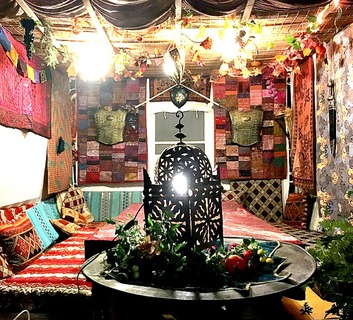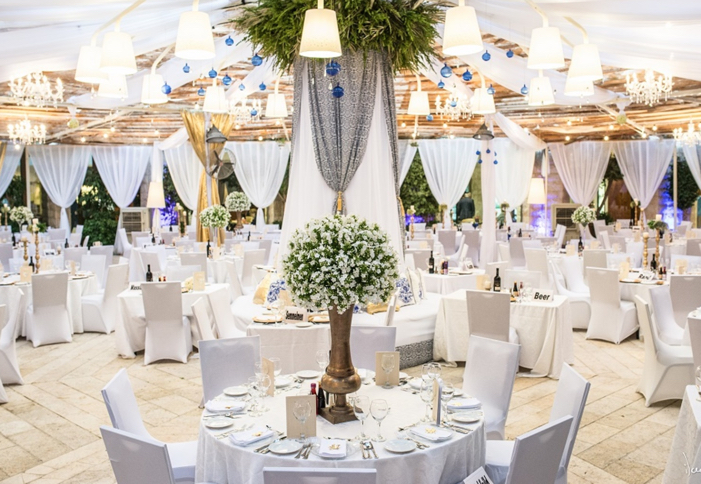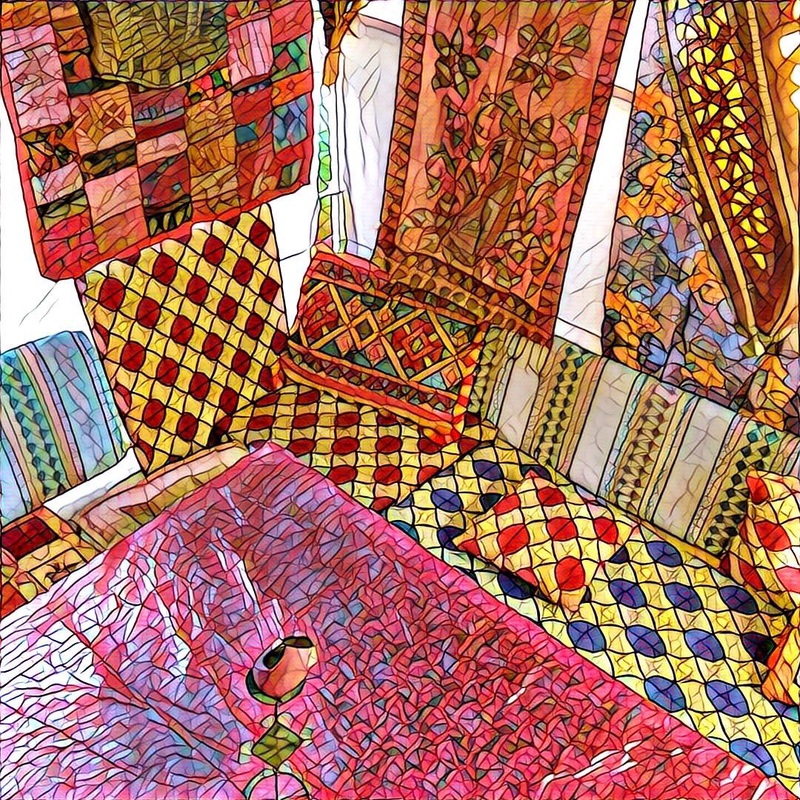
Pomegranates are a dark crimson. Cranes soar high in the blue skies above. When the dawn air becomes deliciously crisp and cool, it is time to step outside our homes and enter the sukka, the temporary dwellings of our Sukkot holiday.
These wooden booths are parked on the streets, replacing cars with family homes. Across the country, Sukkahs booths perch on apartment balconies and house lawns, in courtyards and in apartment parking lots.
Some are fancy and some simply constructed with wooden boards for walls and palm fronds for roofs. The Chabad tradition is not to decorate the Sukkah at all, while deluxe hotels design sukkahs akin to wedding pavilions.
We love to decorate our Sukkah and come up with a new theme every year. This year, my son decided that we should do a medieval sukkah. On came the creative thinking caps and out came various decorations. We worked as a team and created our gem that is in the Villa Tiferet courtyard beside the splashing fountain.
And some sukkahs even sit on beaches facing the lapping water. When we went to the Kinneret for a swim, there was a sukkah on the beach, one side open to the sparlking blue water. Above this maritime Sukkah flapped a black pirate flag with a skull proudly wearing a a pair of tefillin on its forehead.
Only in Israel.
As my husband went for a late afternoon swim, he saw a group of men wave and call out to the bathers, “Mincha!” it was time for the afternoon prayers. Men and young boys came out of the water. People camping on the beach gathered. All were strangers, yet were family. In shorts, long black pants, dripping bathing suits, black hats, dreadlocks, large knitted kippot. Together, they faced Jerusalem to pray, then joined hands and danced on the beach. The sun was setting, glistening behind the mountains, casting shadows across the Golan. The group moved as one, celebrating this holiday of joy and Jewish unity.
Only in Israel.
These wooden booths are parked on the streets, replacing cars with family homes. Across the country, Sukkahs booths perch on apartment balconies and house lawns, in courtyards and in apartment parking lots.
Some are fancy and some simply constructed with wooden boards for walls and palm fronds for roofs. The Chabad tradition is not to decorate the Sukkah at all, while deluxe hotels design sukkahs akin to wedding pavilions.
We love to decorate our Sukkah and come up with a new theme every year. This year, my son decided that we should do a medieval sukkah. On came the creative thinking caps and out came various decorations. We worked as a team and created our gem that is in the Villa Tiferet courtyard beside the splashing fountain.
And some sukkahs even sit on beaches facing the lapping water. When we went to the Kinneret for a swim, there was a sukkah on the beach, one side open to the sparlking blue water. Above this maritime Sukkah flapped a black pirate flag with a skull proudly wearing a a pair of tefillin on its forehead.
Only in Israel.
As my husband went for a late afternoon swim, he saw a group of men wave and call out to the bathers, “Mincha!” it was time for the afternoon prayers. Men and young boys came out of the water. People camping on the beach gathered. All were strangers, yet were family. In shorts, long black pants, dripping bathing suits, black hats, dreadlocks, large knitted kippot. Together, they faced Jerusalem to pray, then joined hands and danced on the beach. The sun was setting, glistening behind the mountains, casting shadows across the Golan. The group moved as one, celebrating this holiday of joy and Jewish unity.
Only in Israel.



 RSS Feed
RSS Feed


